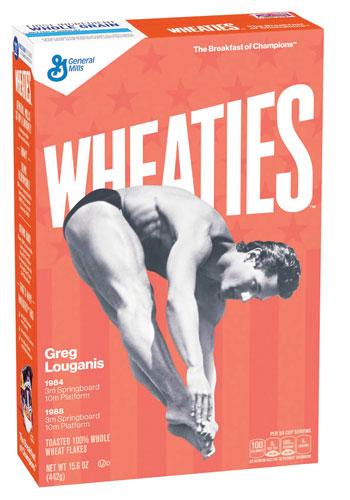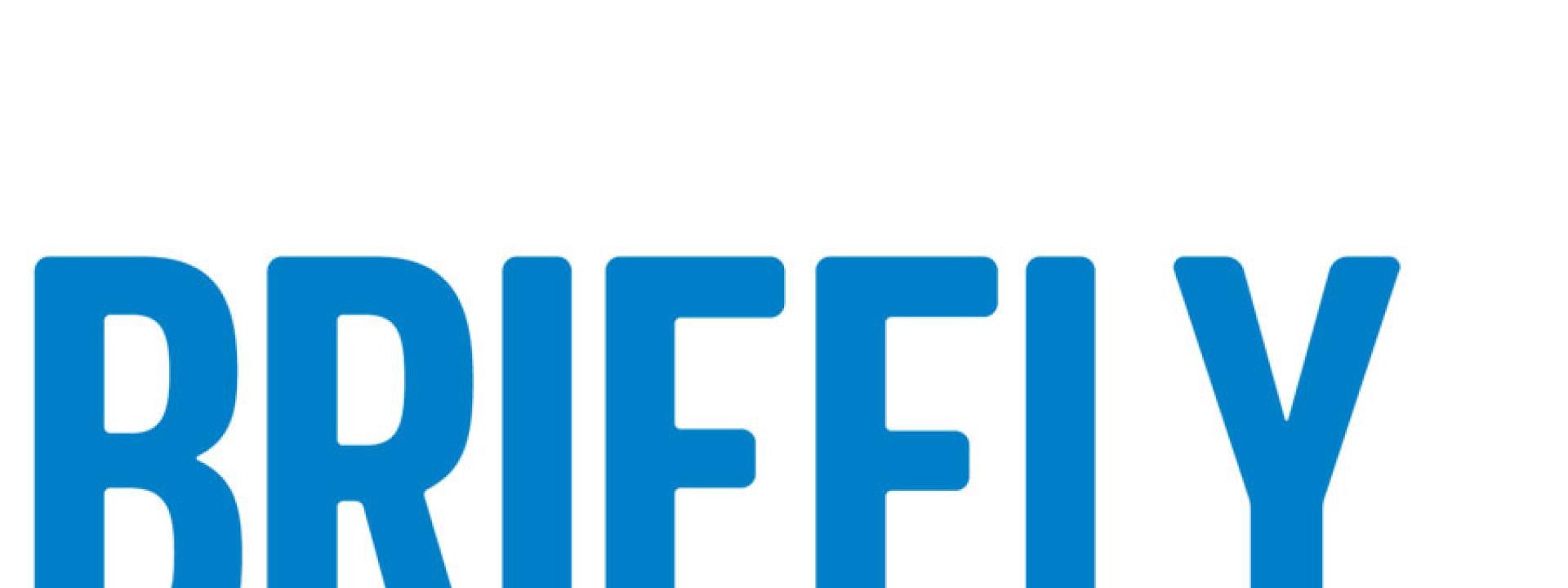Two new TAF-based meds approved
The FDA has recently approved two new HIV meds that contain TAF instead of TDF, reboots of Truvada and Complera.
For many years, TDF (tenofovir disoproxil fumarate) has been the most commonly used background drug in combination HIV therapy. TAF (tenofovir alafenamide), however, lessens the risk of kidney and bone toxicities seen with TDF.
Although TDF is available under the brand name Viread, it is most often taken as Truvada (emtricitabine/TDF, or FTC/TDF) or in various single-tablet regimens (STRs): Atripla, Complera, and Stribild.
The first HIV medication containing TAF to receive FDA approval was Genvoya, an STR, in November 2015. It is a new version of Stribild, switching out the TDF for TAF. A future medication with TAF that’s anticipated is the first STR to contain a protease inhibitor drug, Prezista, in combination with cobicistat.
The new TAF formulations represent a shift in HIV therapy.
From TDF to TAF
TDF and TAF are actually prodrugs of tenofovir. A prodrug is a medication that becomes metabolized (processed in the body) into the active drug, in this case, tenofovir. Given by itself orally, tenofovir does not get properly absorbed by the body. Hence the need for a prodrug to ensure that tenofovir is effective.
TAF is easier on the kidneys and bones thanks to lower blood levels. Since tenofovir is eliminated through the kidneys, it creates a potential for renal toxicity. TAF was created to reduce the toxicity that TDF can have on the kidneys and bones. TAF allows for 90% less serum concentration of tenofovir compared to TDF; thus, there is less tenofovir to eliminate through the kidneys. The fact that the TAF dose is less than 10% of the TDF dose is also why pills containing TAF are smaller than their TDF-containing counterparts.
At the same time, there is more tenofovir in the target cells where it’s needed, in the PBMCs (peripheral blood mononuclear cells, which include lymphocytes, monocytes, and macrophages).
This is also why there’s a smaller TAF dose used than there is for TDF, 10 mg or 25 mg, compared to the 300 mg of TDF used in treatment. The 10 mg is used in several boosted single-tablet regimens (such as Genvoya and Stribild) and the 25 mg is used in the STR Odefsey and fixed-dose combination of Descovy, approved for use in both boosted and unboosted regimens (see “Descovy” below).

Descovy
On April 4, the FDA approved the new TAF version of Truvada, Descovy. Descovy (F/TAF) contains 200 mg of FTC and 25 mg of TAF. It can be taken by pediatric patients age 12 and older, and patients with moderate kidney disease (a creatinine clearance down to 30). Thanks to advocacy efforts of the Fair Pricing Coalition (FPC) Descovy is priced identical to Truvada, with a Wholesale Acquisition Cost (WAC) of $1,466 per month, or $17,841.69 per year (for 365 days). Initially it was thought that two different versions of F/TAF would be needed, one containing 10 mg TAF for boosted regimens and a 25 mg version for unboosted, but both Gilead and FDA saw value in simplification, and in studies using 25 mg TAF in those on boosted regimens, drug exposure was within acceptable ranges, efficacy was similar to 10 mg, and no safety signals (signs of toxicity) were seen. The Gilead Advancing Access program will cover Descovy the same as Truvada. Although Truvada has an FDA indication for HIV prevention, the new TAF version does not. Descovy should not be used for PrEP (pre-exposure prophylaxis) until research is done proving its effectiveness for prevention.
Go to positivelyaware.com/descovy for more information.

Odefsey
The new TAF version of Complera, Odefsey, was FDA approved on March 1. Complera and Odefsey are STRs. Odefsey contains the same medications as Complera but switches out the TDF for TAF. Odefsey is the second STR approved for patients with moderate kidney disease, down to a creatinine clearance of 30. (Genvoya was the first.) It is also the third STR, following Genvoya and Complera, that’s approved for children age 12 and up—it’s also the smallest STR pill. Of note, children’s bones are still developing, so the TAF formulation may be especially useful vs. TDF. Odefsey has a switch indication—it can be taken by people switching from another regimen as long as they have had undetectable viral load (less than 50 copies) for at least six months prior to going on Odefsey, and no evidence of viral resistance to the medications in Odefsey. Like Complera, Odefsey should not be taken by people with less than 200 T-cells or more than 100,000 viral load. Besides FTC/TAF (both from Gilead Sciences), Odefsey (like Complera) contains rilpivirine, from Janssen Pharmaceuticals.
Go to positivelyaware.com/odefsey for more information.
New hep C drug, Zepatier
On January 29, the FDA approved a new drug for the treatment of hepatitis C virus (HCV), Zepatier, specifically for genotypes 1 and 4. Zepatier consists of two medications, elbasvir and grazoprevir. A drug resistance test is recommended before taking Zepatier. Zepatier can be taken by patients on hemodialysis. Some patients may need to take it with ribavirin. See the Positively Aware/Project Inform Hepatitis C Drug Guide online (July+August 2015).
Treatment recommended for recently infected
In January, U.S. HIV treatment guidelines strengthened their recommendation that all patients living with the virus be offered antiviral medication no matter what their CD4 T-cell count and added the words “including those with early HIV infection.” The recommendation now has the highest grade possible, A1. It’s based on two large studies (START and TEMPRANO) showing a 50% drop in death and illness for people who start treatment when they have more than 500 T-cells.
Although the studies did not include adolescents, the guidelines have extended the recommendation to this group “based on the expectation that they will derive benefits from early ART [antiretroviral therapy] similar to those observed in adults.” The guidelines section on older adults “emphasizes that ART is especially important for older patients because they have a greater risk of serious non-AIDS complications and potentially a blunted immunologic response to ART.” Go to aidsinfo.nih.gov.
Stribild label update
On March 1, the FDA added a new drug interaction to the Stribild drug label. People taking the medication Seroquel (quetiapine) should consider taking other HIV therapy instead of Stribild. If taking both medications is considered necessary, the Seroquel dose should be reduced to one-sixth of its current dose to avoid increases in its exposure in the blood. It should be monitored for adverse reactions; see recommendations for monitoring on the Seroquel drug label. Seroquel is an antipsychotic medication used for the treatment of depression, schizophrenia, and bipolar disorder.
Two-drug treatment studied
The AIDS Clinical Trials Group (ACTG) is looking to see if two drugs for treating HIV can be as good as three in treatment-naïve individuals. ACTG A5353 provides Tivicay (dolutegravir), a potent but tolerable HIV medication on the market, with Epivir (lamivudine). “Since some HIV medicines have side effects and are costly, there is interest in whether HIV can be successfully controlled with fewer than three HIV drugs,” the group says on its website. The 28 sites participating in the study include clinics in Chicago, Los Angeles, New York City, San Francisco, and Puerto Rico. ACTG is also looking at switching people whose virus is suppressed on treatment to the simplified Tivicay + Epivir regimen. Go to actgnetwork.org.
Complera now for pediatrics
On March 1, the FDA approved the use of Complera, a single-tablet regimen, for use by pediatric patients ages 12 and up weighing at least 77 pounds. In a study of 36 children, however, depressive disorders were seen in 19.4% of them (seven of the 36), with one experiencing suicidal ideation and suicide attempt. Go to positivelyaware.com/complera for more information about the medication..

Pediatric guidelines recommend HIV treatment for all children
U.S. pediatric HIV treatment guidelines updated March 1 now recommend therapy for all children with HIV regardless of clinical symptoms, viral load, or CD4 T-cell count. “The strength of the Panel’s recommendations varies by age and pretreatment CD4 cell count due to fewer available pediatric data regarding benefits and risks of therapy in asymptomatic HIV-infected children than in adults,” the guidelines noted.
HIV medications now recommended as preferred for children include Norvir-boosted Prezista for ages 3 and up; Isentress for ages 2 to 12; and Genvoya and Tivicay for those age 12 and older.
The guidelines now use sexual maturity rating (SMR) rather than Tanner staging for determining treatment dosing in adolescents. More information has been added about the timing and selection of HIV therapy, adherence, and sexually transmitted infections in adolescents. There is also “additional guidance … to improve retention in care and minimize the risk of interruptions to ART [antiretroviral therapy]” during a transition from pediatric to adult health care settings. There is also more information about potential medication toxicities as well as drug-by-drug updates. The recommendation to use fourth-generation HIV tests in pregnancy has been strengthened. Read about all these and other updates at aidsinfo.nih.gov.
Truvada now for Pediatrics at least 37 pounds
The FDA in March updated the Truvada drug label to add pediatric patients weighing at least 37 lbs (17 kg) who are able to swallow a whole tablet. Also, Truvada (emtricitabine/tenofovir disoproxil fumarate, or FTC/TDF) now has three new pills available: 100 mg FTC/150 mg TDF; 133/200 mg; and 167/250 mg. Full-strength Truvada is 200/300 mg. In studies, pediatric patients experienced adverse reactions similar to those seen in adults, including kidney toxicity (reactions consistent with proximal renal tubulopathy) and decreases in bone density. See the drug label for more information.
Anti-criminalization and advocacy training
HIV is Not a Crime II Training Academy will be held May 17–20, 2016 at the University of Alabama in Huntsville. The Training Academy consists of three days of workshops, state advocacy, grassroots organizing, criminalization reform messaging, and familiarity with the related legal, medical, media, and public health issues. Attendees include advocates living with HIV, community organizers, activists, and experts in public health, law, and public policy from across the country. The conference will unite and train advocates living with HIV and allies from across the country on laws criminalizing people living with and vulnerable to HIV and on strategies and best practices for repealing such laws. For more information go to hivisnotacrime.com.
Positive women’s survey
Results of a survey of women living with HIV released in March by the Positive Women’s Network-USA (PWN-USA)reported that, “180 women living with HIV in 7 geographic regions were surveyed to find out what was working, what wasn’t, and which services would help women stay in care.” Go to pwnusa.wordpress.com.
England’s NHS backs down on PrEP
In March, England’s National Health Service announced that it would fund “early implementer test sites” for two years covering Truvada PrEP (pre-exposure prophylaxis). Advocates criticized the agency’s move away from a plan to provide the prevention pill on a much broader basis. The Terrence Higgins Trust issued a statement in which CEO Ian Green says, “By denying full availability of PrEP we are failing those who are at risk of HIV.”

Long-term survivors summit set for Philly
The Reunion Project heads to Philadelphia on Saturday, May 14, 2016.
This daylong summit at the William Way LGBT Community Center will bring together HIV long-term survivors to reconnect and share their experiences, while learning practical information about HIV and aging and long-term survival. For more information go to tpan.com/reunion-project, or email mailto:publications@tpan.com.
Greg Louganis gets his own box of Wheaties
Congratulations to Olympic Gold Medalist Greg Louganis on finally getting his image on a Wheaties box. On April 5, Louganis Tweeted, “Officially been welcomed into the Orange Box Club!” He told the New York Times he believed it was most likely homophobia that slowed down the honor of gracing the Breakfast of Champions for decades after his four Olympic gold medal wins in 1984 and 1988. He came out as gay in 1994 and a year later, his autobiography revealed that he was also living with HIV. Ever graceful, he was quoted as saying, “The times have changed so drastically and so fast,” and praised two other Gold Medalists belatedly appearing on the cover of their own Wheaties box in a new “legends series.” The honor came after an HBO documentary last year, Back on Board: Greg Louganis (nominated for a Sports Emmy Award, also in April), followed by a petition drive with 40,000 signatures asking that his photo be put on a Wheaties box. The boxes are expected to be available in stores from May through at least the end of summer. (Gosh, will General Mills be able to make enough for the demand?!)

Poz cruise sets sail October 29

“There are 300 friends you haven’t met yet, and they are sailing every year on the HIV Cruise Retreat,” says a postcard for the 12th Annual Poz Cruise. “There is simply something powerful about having a thrilling vacation where your HIV status is not an issue. We draw support from each other.” Cost starts at $629 plus $115 port tax. This year’s cruise sails round-trip from Fort Lauderdale to Grand Turk, La Romana, Aruba, and Curacao, returning November 6. For more information, go to hivcruise.com.
A poem a Day About HIV
I have seen the fire
Destroying everything in its path
In its blazing wrath
—From 1996,
by James Savik
HIV-positive poet Michael Broder created the online project “HIV Here & Now,” posting a poem a day for one year leading up to the 35th anniversary of the first U.S. report on the epidemic (June 5), when the virus did not even have a name. Go to hivhereandnow.com.


